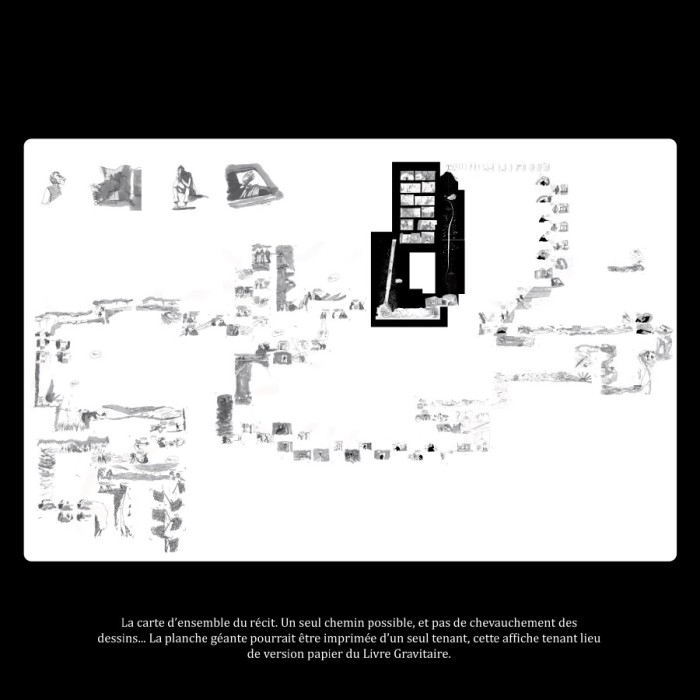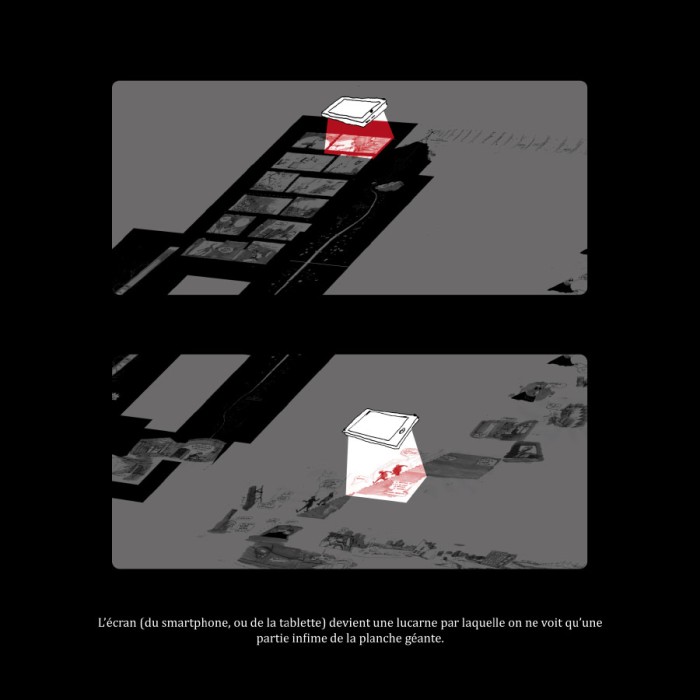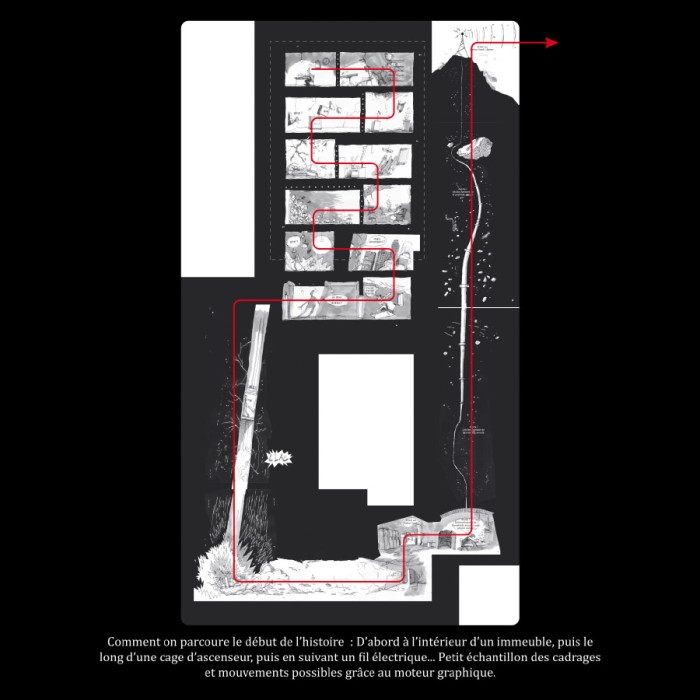Aportando $ 6
Un grand merci à vous!
Mention du soutien dans une page "remerciement" ajouté à l'application
> 06 Cofinanciadores
Goteo ha construido una historia única en el mundo del micromecenazgo. ¿Quieres seguir formando parte de ella?
Utilizamos cookies propias y de terceros para mejorar su experiencia y nuestros servicios, analizando la navegación en nuestro sitio web. Si continuas navegando, se considera que das tu consentimiento para su uso. Puede obtener más información en nuestra Política de Cookies
Le livre gravitaire
 Min.
Min.
 Opt.
Opt.
Mention du soutien dans une page "remerciement" ajouté à l'application
Invitation à une soirée de lancement du livre gravitaire
Recevoir un "produit dérivé" du livre gravitaire (affiche, carte postale...)
Disposer en avant-première du code original du moteur graphique, pour le tester, faire un retour au développeur, proposer des améliorations...
Rencontre avec les auteurs autour d'un verre (sur Nantes et environs)
Cours particulier de dessin ou de code créatif, selon votre convenance.
Un dessin original qui a servi au projet (sachant que ces dessins ne seront pas exactement identiques à la version de "diffusion", car ils passent en partie par la retouche numérique - formats A4 en général).
Explorer les contraintes et libertés d'écriture qui apparaissent lorsque l'on propose une nouvelle interface de lecture : Qu'est-ce qui est hérité du livre « traditionnel », qu'est-ce qui est radicalement nouveau ? Quels schémas narratifs issus d'autres médias sont rendus possibles grâce à ces nouvelles interfaces?
El proyecto de "livre gravitaire" propone explorar las posibilidades narrativas ofrecidas por un motor grafico inédito. Para manipular el nuevo media que el libro electrónico representa.
 Tarea
Tarea
|
Mínimo | Óptimo |
|---|---|---|
|
Développement des outils de navigation
Développement des outils suivants: boussole, niveau à bulle, pilote automatique, autocarte…
|
$ 724 | |
|
Dessin des vignettes, lettrages
Réalisation de toutes les images du livre.
|
$ 2,317 | |
|
Mise en page, compositing
Organiser les dessins sur la planche géante, qui défilera dans la fenêtre de l'écran. Un peu de retouche d'image, le cas échéant.
|
$ 1,159 | |
|
Développement du moteur graphique annexe
Le prologue du livre gravitaire est lu "classiquement", en feuilletant avec l'index. Donc cela nécessite un second moteur graphique (beaucoup plus simple que le premier, le "gravitaire").
|
$ 724 | |
|
Développement compatibilité
Amélioration de la compatibilité avec différentes version android
|
$ 724 | |
|
Portage sur plateforme OSX
Portage sur plateforme OSX (apple).
|
$ 1,159 | |
|
Ecriture, illustrations
Recherches complémentaires en écriture et dessin
|
$ 1,159 | |
|
Lettrages sur ordi
Réalisation des lettrages
|
$ 1,159 | |
| Total | $ 4,200 | $ 9,124 |
La idea es proponer un cómic exclusivamente de modo numérico, no sólo una transposición de los códigos narrativos «papel» sobre una pantalla.
El principio es sencillo: el lector se encuentra frente a una gran lámina de cómic de la cual sólo puede visualizar una pequeña parte a través de la «ventana» de la pantalla del teléfono o de la tableta que tiene en las manos.
Al inclinar el aparato, la fuerza de la gravedad hace «caer» la lámina que desfila en el marco de visualización. Así, el lector "circula" sobre la gran lámina. El reto del proyecto reside en el juego entre las peripecias de la historia y el movimiento de desplazamiento, entre una dramaturgia y su transcripción en una estructura pictórica compleja, a explorar.
En el cine, desde el punto de vista de la escritura, el encuadre no es neutral. No se exprimen los mismos recursos con un travelling, un plano fijo o un montaje «cut» etc.
Igualmente, el proyecto de "livre gravitaire" apuesta por la expresividad gráfica de su dispositivo: ¿Qué ocurre cuando se hace desfilar uns casilla larga de 1 metro frente a los ojos del lector? ¿O cuando las viñetas están colocadas para simular un diálogo en «plano/contraplano»? ¿Qué ocurre si al explorar la historia la lámina se gira totalmente?
Dos principios de base fueron elegidos:
1 • Una única lámina
No cut ni fundido encadenado entre dos planos: se trata de hecho de una gran página (que podría ser impresa en papel), no de una película ni de una crónica animada.
2 • Un único camino posible
Es un libro, no un videojuego. El lector tiene su parte de responsabilidad y albedrío en la manera de explorar la obra (como lo hace en un verdadero libro) pero no participa en escoger entre las diferentes líneas del guión.
Las imágenes de un cómic digitalizado están ligadas con un motor gráfico que reacciona con la inclinación del soporte de lectura (tableta o smartphone). Los datos de cada viñeta están detectados, así que el trayecto a seguir recorre una a una cada viñeta.



Desde siempre, el equipo de desarrollo de este proyecto se ha interesado por los cómics y los medias digitales. Sin embargo, los cruces propuestos hasta entonces entre ambas culturas no les parecían interesantes. Buscaban una herramienta que pudiera cuestionar los esquemas narrativos heredados del cómic papel (viñeta, strip, lámina). El "livre gravitaire" es, de cierta forma, la concreción de esta búsqueda.
Una vez la ergonomía y las herramientas listas, otros podrán utilizar esta herramienta de narración:
En resumen, el "livre gravitaire" podría servir de laboratorio para:
Al fin y al cabo, esperamos que los grandes beneficiarios del proyecto sean los lectores!
¿Por qué utilizar la plataforma Goteo?
Porque nos parecía obvio desarrollar este proyecto en la dinámica de cultura libre defendida por Goteo. En efecto, el motor gráfico es programado bajo la licencia GPL: el código podrá ser utilizado y/o mejorado por demás personas. También, el código existente podrá ser utilizado sin cambio por demás autores que podrán poner en perspectiva su propio universo.
La apertura fomentada por las licencias libres ayuda verdaderamente en la difusión de este tipo de proyecto bastante innovador.
Raphaël Lerays: Arquitecto y escenógrafo de formación, la cuestión de transmedia aparece de manera implícita en la mayoría de los proyectos que imagina. Todas sus proposiciones tienen algo en común: cuentan historias apoyándose sobre varias materias (espacio, realización video, texto ilustrado, cómic…).
Alexis Chabanol: Traductor de profesión, es el co-autor, con Raphael Lerays, del proyecto Strip Trips: un intercambio epistolar web, dibujos contra textos (2010 a 2012, 216 números). El "livre gravitaire" es un formato diferente (un relato único) con un dispositivo literario inédito.
Laurent Malys: Laurent Malys programa softwares y aplicaciones en varios dominios. Su trabajo explora la manera que tenemos de interaccionar con la máquina y cuestiona los límites y capacidades de las interfaces humano/máquina. Rápidamente, se involucró en el proyecto de motor gráfico en el cual se apoya el "livre gravitaire". Sus conocimientos influyeron en las elecciones de ciertos factores para el proyecto como la ergonomía del prototipo o sus funcionalidades.

Un grand merci à vous!
Mention du soutien dans une page "remerciement" ajouté à l'application
> 06 Cofinanciadores
Invitation au vernissage
Invitation à une soirée de lancement du livre gravitaire
> 31 Cofinanciadores
Produit dérivé
Recevoir un "produit dérivé" du livre gravitaire (affiche, carte postale...)
> 17 Cofinanciadores
DIVERS : BETA-TESTING
Disposer en avant-première du code original du moteur graphique, pour le tester, faire un retour au développeur, proposer des améliorations...
> 11 Cofinanciadores
Rencontre avec les auteurs
Rencontre avec les auteurs autour d'un verre (sur Nantes et environs)
> 15 Cofinanciadores
Transfert de savoirs
Cours particulier de dessin ou de code créatif, selon votre convenance.
> 03 Cofinanciadores
Oeuvre originale
Un dessin original qui a servi au projet (sachant que ces dessins ne seront pas exactement identiques à la version de "diffusion", car ils passent en partie par la retouche numérique - formats A4 en général).
> 08 Cofinanciadores
Workshop : Nouvelles écritures, nouveaux lecteurs à l'ère du livre numérique.
Explorer les contraintes et libertés d'écriture qui apparaissent lorsque l'on propose une nouvelle interface de lecture : Qu'est-ce qui est hérité du livre « traditionnel », qu'est-ce qui est radicalement nouveau ? Quels schémas narratifs issus d'autres médias sont rendus possibles grâce à ces nouvelles interfaces?
> 00 Cofinanciadores
Traduction des pages du site goteo, qui présente le projet. Traduction du livret de présentation du projet (une douzaine de pages, donc travail as